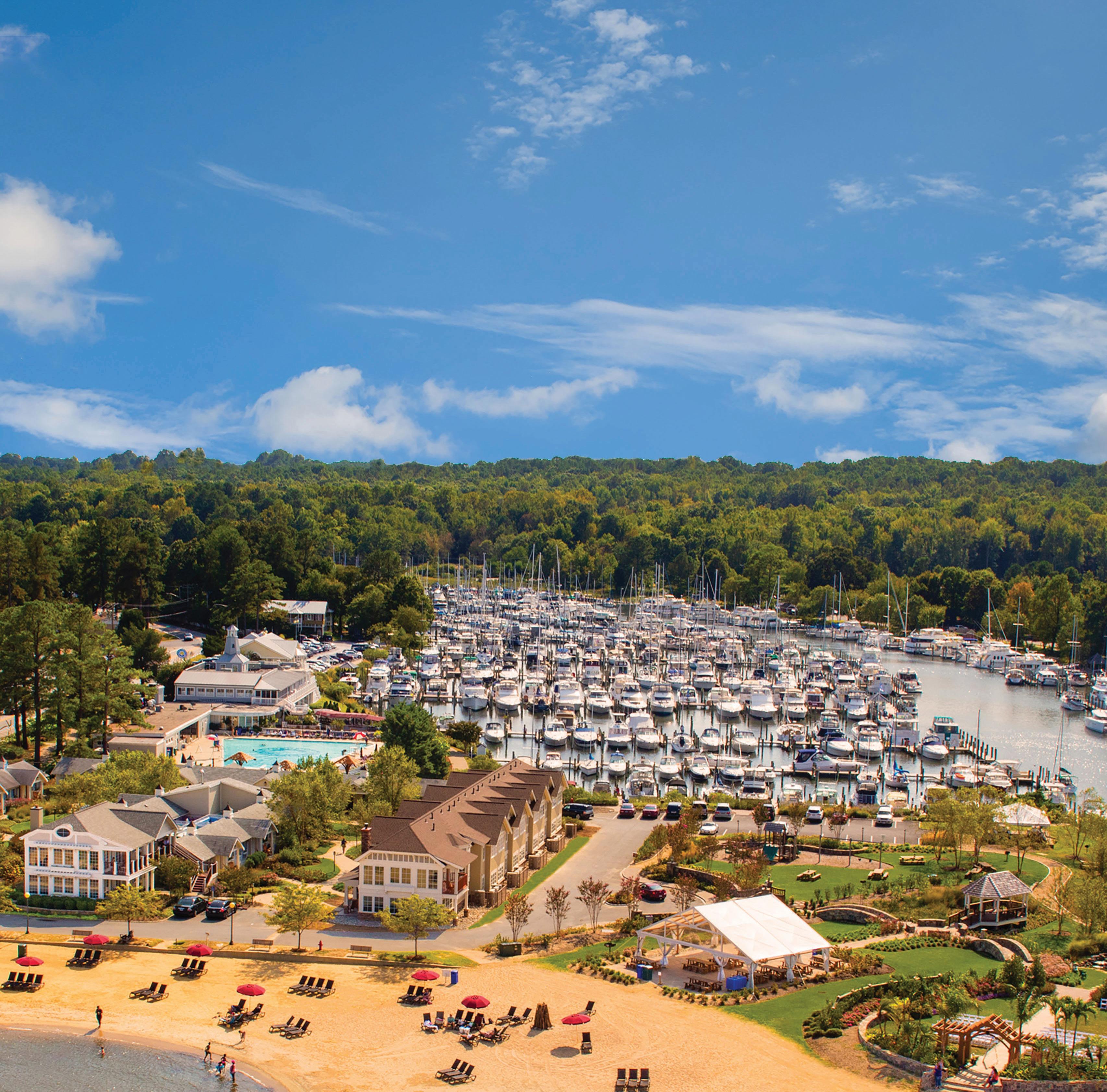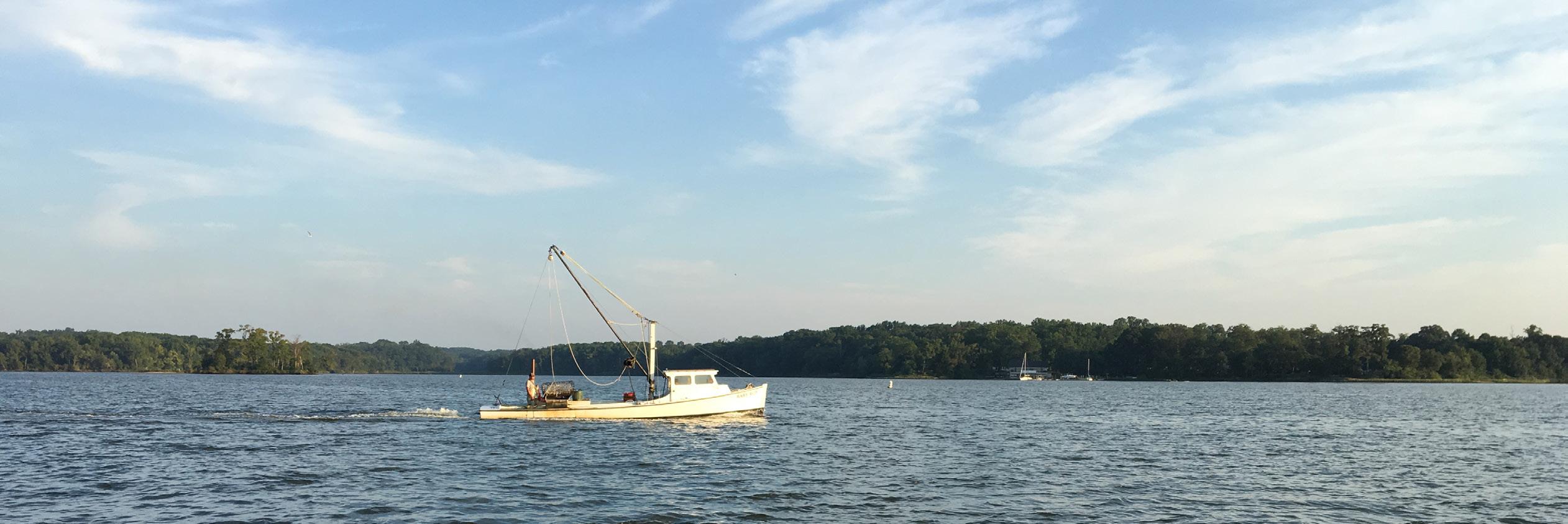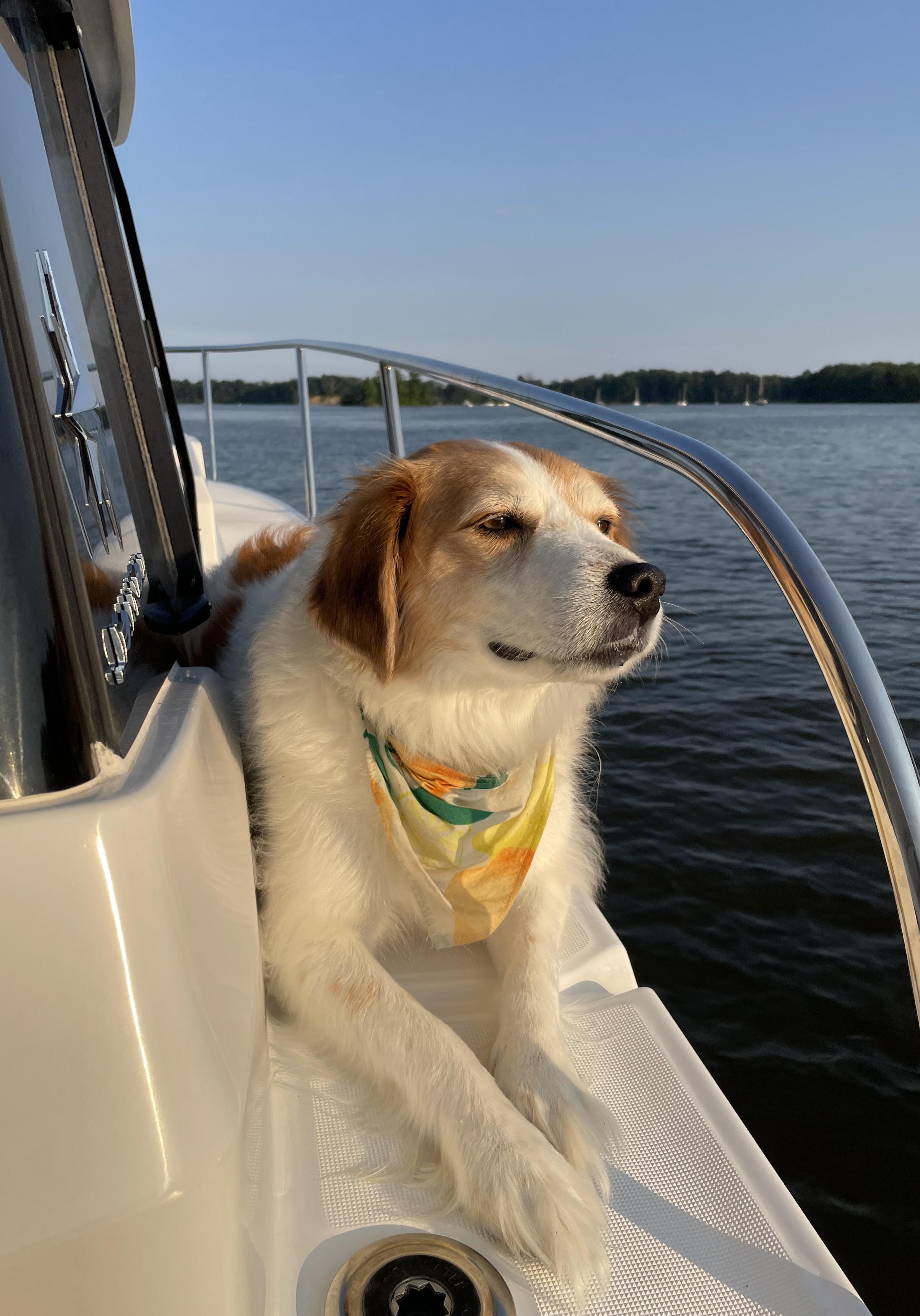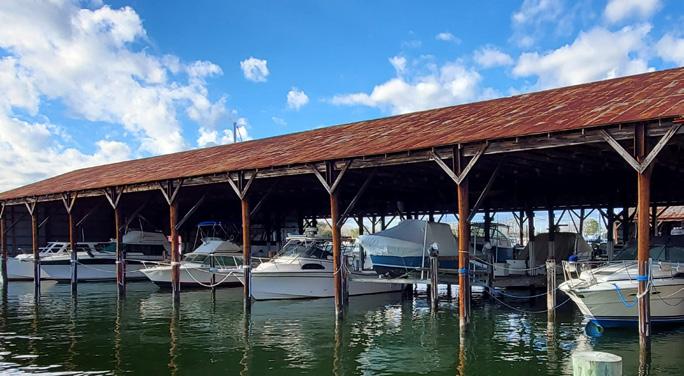
5 minute read
DAY TRIPPING Gunkholin’
BY RAFAEL ALVAREZ
Gunkhole: A secluded cove that's a perfect spot to spend a few quiet hours at anchor.
Gunk: what you have to wash off the anchor when you haul it up.
Gunkholin’: The gentle art of anchoring as large a boat as possible in a body of water as shallow as possible for the express purpose of relaxing as much as possible. “We’ll make a mighty effort to be lazy to the core,” as one gunkholin’ bard explains it.
Afunky name: Gunkholes. Familiar to boaters, but not so much the general public. A gunkhole isn’t a dirty carburetor but a term of unknown origin for shallow coves and creeks where sailors can drop anchor and take a dip. If Huck Finn had launched his raft on the Chesapeake Bay and not the Mississippi River, he might have dropped his skivvies for a dip at Bodkin Creek, Still Pond, Worton Creek or any of a hundred or so others between the mouth of the Bay and Elk River.
Worton, on Maryland’s upper Eastern Shore, is a favorite of many. “For true shallow-water boats, it has a cool little cove at the entrance to the creek with an even better beach,” says


Jeffrey Wettig, who sails out of the North East River. “There’s a large anchorage with a [big] enough beach to gather wood for fires and a marina or two to choose from for supplies and it's a great halfway point on our way south and back from, say, Annapolis.”

“Worton’s protected if you get a bad storm,” says Mark Clark, a lifelong resident of Linthicum who keeps his boat—the 28-foot Columbia Glass Lady—in nearby Rock Hall. “And there’s a nice beach where you can go over a hill and see the Bay.”
Swimming in the Chesapeake Bay has its hazards, like a jellyfish with an annoyingly painful—though rarely fatal—sting. Curiously, Smithsonian scientists recently discovered that the jellies found in the mid-Bay from midsummer to late fall are actually a distinct species from the ones in the Atlantic Ocean. So what we’ve been calling “sea nettles” for the past 175 years are actually “Bay nettles.”
According to NOAA’s Ocean Prediction Center website, they’re most often found in the mid-Bay, roughly between the mouth of the Chester River and the mouth of the Potomac, where salinities range from 10 to 20 parts per thousand (ppt). In the southern Bay, they often have red/ maroon markings on the long central tentacles and on the swimming bell. Since the region has had lower than normal rainfall this spring, salinity levels are predicted to be higher than normal this summer, which means there will probably be more nettles than usual.
Despite these annoyances, the Chesapeake’s creeks and rivers—and here and there a shimmering pond— are favored spots for vessels to drop anchor for an afternoon’s respite.
“We like Eagles Nest by Gibson Island,” says Gill, who sails a Beneteau 32.1, the Tom Foolery, with her husband. The Olney couple, who has cruised north of the Bridge for the past 13 years, is also fond of Bodkin Creek, Still Pond, Reed Creek, Fairlee Creek, and, just above Gibson Island, a small inlet called Grays Creek.

“We anchor sometimes in San Domingo Creek near St. Michaels,” says Gill. “And from Waterhole Cove it’s just a dinghy ride to shore and then a short walk over to Lowe’s Wharf where there’s a beach bar.”
William Gallion sails a 420 Passage, docked at Bowleys Marina near the mouth of Middle River. “We’re especially fond of Swan Creek over toward Rock Hall for its quiet serenity, ease of getting there and swimming.” Bonus points, he says, “for shore access for dog walking and restaurants.”
Janet Ennis and her husband Jim Carmen are keen on taking their 42foot aft-cabin Carver, the 1099, into the protected waters of Wall Cove off of Rock Creek near Pasadena. There, near the Fairview Marina, they often dine at Mike’s North, where a bowl of cherrystone clams in broth goes for $15.
“We anchor out quite a bit and Jim likes to swim sometimes,” says Janet, soon to retire from the healthcare industry. “We’ll go out on a Thursday night and come home Monday from places like Frog Mortar Creek in Middle River. Lots of boats and swimming there. We usually just people watch but if it’s super hot we’ll grab a noodle and float around. It’s a great lifestyle.”
The couple, who has sailed the Bay on their Carver for two decades, also likes to visit Sue Creek in Essex and currently keeps their boat at the Sparrows Point Country Club in eastern Baltimore County. Its name, 1099, does not refer to a tax form but the interest rate at the time the couple bought a previous vessel.
Lynn Morris is a childhood friend of Mark Clark and his wife Karen Zaruba, whose family hails from Curtis Bay, where no one in their right mind goes for a swim. Morris lives on Hungars Creek near Cape Charles, Virginia. Like many who live on the Bay, she calls it “our little piece of heaven.”
“We love going to Sandbar Sundays on Smith Beach,” says Morris, whose husband Bill owns a Key West 23, Carolina Skiff and a boat for duck hunting. “It’s between Machipongo and Cape Charles on the Bay side. Everyone pulls up to the sandbar in the middle of nowhere for a few hours of partying.” Some of the bigger parties, she adds with a wink, are known as the “Hungar Games.”
Digital conversations among gunkholers take place by the hour on Facebook’s Middle Chesapeake Bay Sailing page. Member Larry Wilson says he likes the Fleets Bay area just north of Virginia’s Rappahannock River.

Many of these spots—Shaw Bay, Solomons Island, Tilghman Creek and scores of others—are detailed in William Shellenberger’s classic “Cruising the Chesapeake: A Gunkholers Guide,” now in its fourth edition. “It’s not what I’d call a bestseller but it's generally well known,” says Wilson. “All of the anchorages were personally visited by the author.”
Rhode River, south of the Thomas Point Lighthouse, is a regular destination for Allan J. Imbraguglio, a transplant from Baltimore to Washington who praises the tributary for “being completely surrounded by nature. It’s as far south as you can go on the Western Shore with such a protected anchorage.
“There are homes on one bank but far enough away that they don’t impede upon the other bank of (nothing but) trees,” said Imbraguglio, who sails a Hanse 455. “Further up the river, Cadle Creek near Holiday Hill Marina is not very large for anchoring but can accommodate maybe three or four boats. They call it Hurricane Hole.”
“Swimming is great around those spots as the water is mostly calm,” said Imbraguglio. “A fair amount of power boats speed through there on weekends with skiers but not enough to dissuade me from going.”
Back in 1954, two years after the Bay Bridge opened, Dan Flagler’s parents stayed on Worton Creek during a cruise of the Bay. “Based on the postcard my mom sent to her parents, it hasn't changed much,” says Flagler, who sails a Pearson 31-2 called Flagfest. “If we’re anchoring out we always look for a swim to cool down after a usually warm day sailing on the Bay.”
We polled our readers to find their favorite spots to laze a day away, and here are some of their responses:
“Still Pond is always my favorite anchorage for fun, but I also like Shaw Bay on the Wye River!”
“Herring Bay and South River”
“Shark Tooth Island on the Potomac, just off Breton Bay”
“Elk Neck State Park and Battery Island in the Upper Bay”
“Lynnhaven River just inside the inlet at Virginia Beach”
“Round Bay, Severn River”
“We stick to Dobbins Island on the Magothy River”










